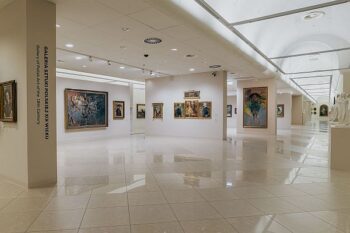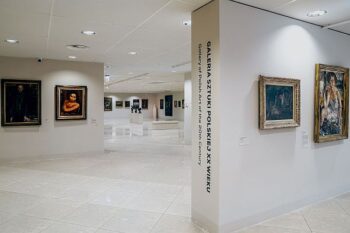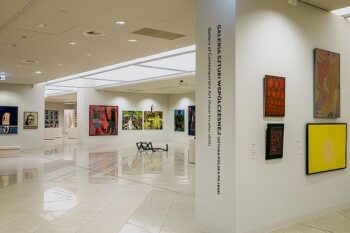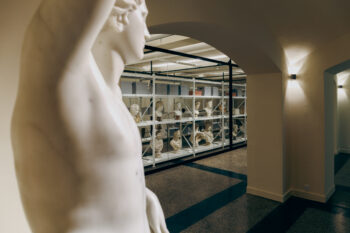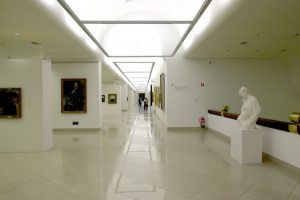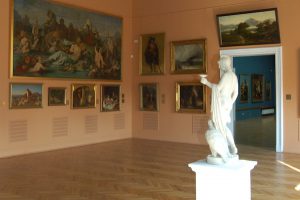The Ancient Art Gallery is located in the basement of the Old Museum Building. In the dimly lit room there are numerous archaeological artifacts that are direct witnesses of events from thousands of years ago.
Upon entering the gallery, the first objects encountered by the viewer are the busts of Brutus and Julius Caesar – some of the most iconic figures of the ancient world. They open a small collection of modern copies of ancient sculptures, including, among others, Dionysus from Pompeii, the so–called Safona bust, or Aphrodite in a bath.
The most characteristic, central point of the Gallery is the collection of Roman emperor and empress busts from the 1st and 2nd centuries. Among them are busts of, among others, Marcus Aurelius, Hadrian, and Plotina – the wife of Trajan. This is a unique collection in the country.
On the right side of the imperial busts, artifacts from the Greek cultural circle have been placed. Chronologically, this collection begins with fragments of Minoan culture vessels – the mysterious urban civilization of the Bronze Age. Of particular note is the face urn from Troy, as well as the collection of Greek vases representing black and red figure painting. The valuable artifact of this part of the exhibition is the marble decree from Tazos, dated from the 3rd century BC. The collections of Greek vase painting are part of the old collection of Izabela Czartoryska exhibited before World War II at the Gołuchów Castle.
The gallery also has a small collection of Etruscan artifacts, including an urn from the 3rd–2nd centuries BC and bucchero nero ceramics with a black, shiny surface.
The material culture of ancient Rome is represented in the gallery by (in addition to the aforementioned busts) a varied collection, including amber beads (amber was highly valued by the Romans), bronze vessels, glass, jewelry and architectural elements. The whole is complemented by a substantial collection of numismatics.
On the left side of the gallery there will be Egyptian collections, including the oldest object in the National Museum in Poznań – a small bowl from the predynastic Nagada culture. Among the Egyptian artifacts, there are also animal mummies of a falcon and a crocodile. They were probably made as sacrificial offerings. Also worth noting is the mahogany male sarcophagus from the late period. Among the artifacts related to the funeral culture of ancient Egypt, the gallery can also see cartonnages, funerary masks, and a collection of ushebti figurines. These figurines were supposed to be summoned by the deceased in the afterlife to work the field. Chronologically, Egyptian artifacts close the Coptic fabrics.
The panorama of Mediterranean cultures is complemented by objects from Palestine and Carthage.
The feature distinguishing the Ancient Art Gallery is its diversity. The wide chronology, the multitude of materials and manufacturing techniques allow the viewer to get acquainted with the panorama of ancient cultures concentrated in the Mediterranean basin to a certain extent.


